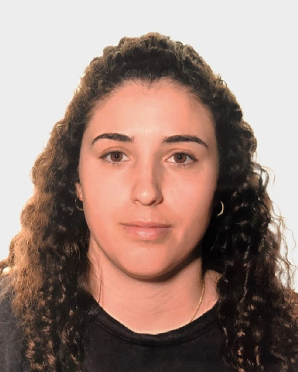A Pyr-GC-Orbitrap-MS Method for Analyzing Microplastics in Air: An Interview with Ana Torres-Agullo and Silvia Lacorte
Raman and Fourier transform infrared (FT-IR) spectroscopy are commonly used to determine the presence of microplastics (MP). Uncertainties arise, however, due to sample manipulation, external blank contribution, sensitivity, and non-homogeneous MP distribution in the filters. Pyrolysis gas chromatography–mass spectrometry (Pyr-GC–MS) methods for MP analysis emerges as a promising tool to determine MP with certainty, although one of the main constraints with the technique is the lack of standards; method validation procedures to ensure quality control, therefore, cannot be implemented. Another challenge is to obtain high selectivity and sensitivity. Pyr-GC when coupled with high-resolution mass spectrometry (HRMS) such an Orbitrap mass spectrometer (Pyr-GC–Orbitrap-MS) provides accurate mass measurements of the different polymers, increasing the potential for MP analysis in terms of accurate identification at trace levels, precision, resolution, and mass accuracy. In a recent paper (1), Ana Torres-Agullo and Silvia Lacorte from the Department of Environmental Chemistry at the Institute of Environmental Assessment and Water Research (Barcelona, Spain) from the Spanish Research Council share the results of using this method to simultaneously determine the presence of 10 polymers in air. We spoke to the authors about this paper, and the work that inspired it.
While in your article you state that the most common methods to determine the presence of microplastics in the air are Raman spectroscopy and Fourier transform infrared spectroscopy (FT-IR), you mention that there are uncertainties that arise from utilizing these techniques. Briefly discuss these uncertainties and their how seriously they can affect your analyses.
The most used techniques for microplastic (MP) analysis are FT-IR and Raman spectroscopy. The primary limitation of FT-IR is its size restriction. Currently, particles below 20 μm cannot be effectively analyzed using this technique, potentially introducing a significant bias to the results. In addition, often it is necessary to transfer the MP from the collection filter used for sampling to the gold-coated or silicon filter used for FT-IR analysis, which is generally done manually using tweezers, and this can be a source of error as this procedure is dependent on the skills and ability of the analyst.
On the other hand, Raman spectroscopy does not have size limitations, but it is a time-consuming and an expensive technique, allowing only the analysis of a small portion of the filter used for sampling. MP distribution within filter is heterogeneous, which potentially leads to inaccurate results from extrapolation.
How does pyrolysis-gas chromatography coupled to orbital trap-mass spectrometry (Pyr-GC–MS) allow you to work around the obstacles that arise from using those previously mentioned techniques? In turn, do other obstacles arise from using a mass spectrometry technique?
Pyr-GC–Orbitrap-MS allows us to overcome the size limitations inherent in spectroscopic techniques. With this technique, it is possible to analyse all the MP present in a sample regardless of their size. Furthermore, sample manipulation is minimized, thus the risk of losing particles or suffering external contamination is avoided. Also, the possibility to use a labelled internal standard allows correction of the Pyr-GC–Orbitrap-MS response, yielding more precise and accurate results. The main obstacle using pyrolysis coupled to GC is that the capacity of the pyrolysis cup is very small, and methods must be miniaturized. Another obstacle is the limited availability of MP standards, although many companies are actively working to address this limitation. It is clear the huge potential of Pyr-GC–Orbitrap-MS for the accurate and trace level analysis of MP in air or other matrices, and nowadays a current challenge lays in providing quality control data of the method, comprising sampling, extraction, and analysis.
Your study outlines your efforts to develop a Pyr-GC–Orbitrap-MS method to simultaneously determine the presence of ten polymers in the air. Briefly discuss your findings.
The developed method is capable of simultaneously identifying and quantifying ten different polymers (PMMA, N66, NBR, PP, PVC, PET, ABS, PE, PC, PS) in air for which we made homemade standards. Optimizing the analytical parameters for each individual polymer has been of paramount importance to set up the method for the simultaneous analysis of the 10 polymers. Therefore, we have consciously adjusted every working condition of the Pyr-GC–Orbitrap-MS (for example, pyrolysis time and temperature, split conditions, chromatographic ramp, acquisition conditions) to allow accurate quantitative analysis and achieve good linearity, repeatability, and sensitivity. The result obtained support the effectiveness of Pyr-GC–Orbitrap-MS for the routine analysis of MP in air and other environmental samples.
Were there any limitations or challenges you encountered in your work?
The main limitations we encountered during this work was the lack of available commercial standards when we started this investigation that made it impossible the set-up of a quantitative and robust method. Thus, we made our own homogeneous and representative MP standards. Moreover, achieving optimal sensitivity and specificity for each polymer in a simultaneous analysis required a thorough evaluation of the fragmentation patterns and selection of the most abundant and specific ions for quantification and confirmation, thus minimizing uncertainties in the identification of the different polymers. This is especially important to avoid interferences from the sample or unambiguous identification of polymers that yield the same ions.
What best practices that can you recommend in Pyr-GC–MS analysis for both instrument parameters and data analysis?
We recommend the following best practices:
- Optimizing instrument parameters including temperature and time settings, gas flow rate and split ratio.
- Using appropriate standards to prepare a precise calibration curve.
- Internal standards are crucial when quantifying using Pyr-GC–MS as it enhances the accuracy, precision, and reliability of the measurement.
- For data analysis, it is important to properly identify each MP signal to avoid misidentification due to interferences or coelutions with other polymers.
- Finally, chemometric tools would help in data-processing in a non-targeted approach, allowing the identification of spectral patterns associated with the presence of other polymers or plastic additives present in the samples.
What are the environmental implications of your study?
This method has been developed to analyze MP in air. However, it can be extended to other environmental matrices (for example, soil, water, sediments) or food matrices, provided appropriate sampling and pretreatment methods to eliminate organic matter or other interferents are used. Therefore, it is expected that the method we propose will allow in the future a better assessment and comparability on the presence of MP is the environment or other matrices.
Can you please summarize the feedback that you have received from others regarding this work?
First, it is the satisfaction of having the work done and published, and the constructive feedback from our research group. From the wider scientific community, our paper has been well accepted as it is maybe the first one using Pyr-GC–Orbitrap-MS in a target/untargeted approach allowing the quantitative analysis of 10 polymers and tentative identification of plastic additives in a single analysis. The feedback we received is that the proposed method can be very useful for the routine analysis of MP in different matrices, as is very sensitive and selective, has low uncertainty and there is minimal sample manipulation.
Do you imagine Pyr-GC–MS to be adaptable to other pollutants? Further, can it be adapted to a liquid chromatography (LC) technique to determine microplastic presence in water?
Indeed, the technique can be adapted to determine other pollutants, with special interest in the identification of plastic additives that might be present in the MP polymers. Also, the technique can be expanded to the identification of other contaminants that can be sorbed onto the MP, however, a careful optimization of the pyrolysis conditions (double shot at different temperatures) might be needed. Liquid chromatography using other sample injection systems such as size exclusion liquid chromatography coupled with high-resolution mass spectrometry (LC-SEC–HRMS) can be used to analyze MP, although there are only a few polymers that can be solubilized, and extensive sample preparation is needed, which increases the risk of external contamination.
What are the next steps in this research?
Our next step is to monitor the presence of MP in indoor areas where people can be exposed to MP (schools, public transport, hospitals, plastic manipulating industries as packaging, department stores, etc.) and determine main pollution patterns. Based on the concentrations of the different polymers in air, human impacts through inhalation will be assessed, following our previous study where MP were detected in nasal fluids. Moreover, we are working on new nanostructures to trap, determine and eliminate MP in indoor air with the overarching aim to minimize human exposure.
Reference
(1) Torres-Agullo, A.; Zuri, G.; Lacorte, S. Pyr-GC-Orbitrap-MS Method for the Target/Untargeted Analysis of Microplastics in Air. J. Hazard. Mater. 2024, 469, 133981. DOI: 10.1016/j.jhazmat.2024.133981
Ana Torres-Agullo holds a MSc in Analytical Chemistry (2021). Currently, she is pursuing her PhD at the Institute of Environmental Assessment and Water Research at the Spanish National Research Council (IDAEA-CSIC, Barcelona, Spain). Her research is focused on developing new analytical methods using GC coupled to high resolution mass spectrometry techniques (HRMS) to determine microplastics, plastics additives and other environmental contaminants in air samples.

Silvia Lacorte is full researcher at the Department of Environmental Chemistry in IDAEA-CSIC (Barcelona, Spain). She holds a PhD in Analytical Chemistry and leads an interdisciplinary research group in the field of analytical and environmental sciences. Her main research interest is to evaluate the presence and impact of emerging and legacy organic contaminants and microplastics in the environment. Her research group designs and implements monitoring studies including water, air, soil, and biota, with the aim to determine contamination patterns and pollution sources, to ultimately find solutions to mitigate the overwhelming problem of chemical pollution.

Advances in Non-Targeted Analysis for PFAS in Environmental Matrices
March 27th 2025David Megson from Manchester Metropolitan University in Manchester, UK, spoke to LCGC International about the latest developments in non-targeted analysis (NTA) of per- and polyfluoroalkyl substances (PFAS) in environmental matrices based on a recent systematic review paper he has collaboratively published (1).
Study Explores Thin-Film Extraction of Biogenic Amines via HPLC-MS/MS
March 27th 2025Scientists from Tabriz University and the University of Tabriz explored cellulose acetate-UiO-66-COOH as an affordable coating sorbent for thin film extraction of biogenic amines from cheese and alcohol-free beverages using HPLC-MS/MS.
Quantifying Microplastics in Meconium Samples Using Pyrolysis–GC-MS
March 26th 2025Using pyrolysis-gas chromatography and mass spectrometry, scientists from Fudan University and the Putuo District Center for Disease Control and Prevention detected and quantified microplastics in newborn stool samples.
The Role of SPME Combined with GC–MS for PFAS Analysis
Published: March 25th 2025 | Updated: March 25th 2025Emanuela Gionfriddo and Madison Williams from University at Buffalo, the State University of New York, NY, USA discuss the important role that solid-phase microextraction (SPME) techniques with gas chromatography mass spectrometry (GC–MS) can play in the analysis of per- and polyfluoroalkyl substances (PFAS).





